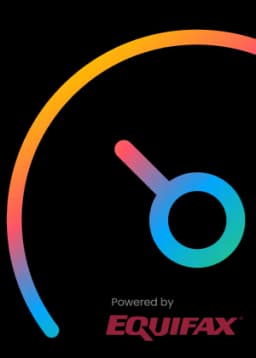Rising bank fees have become a common complaint for Canadians today. As a result of granting customers mortgage payment deferrals and other relief measures during the COVID-19 pandemic, financial institutions have imposed fee hikes on chequing accounts, including overdraft fees and other banking services.
Fortunately, the government of Canada has enforced several regulations to protect people from excessive bank fees. For example, no bank can charge more than a $5 set fee each time you go into overdraft. If your account is already overdrawn, you'd be charged a pay-per-use fee every time you make a transaction, which would increase your overdraft balance.
Whether you're paying flat-rate or pay-per-use fees, it's important to familiarize yourself with the overdraft laws in Canada, as well as your rights as a consumer. If you need a place to start, iCash, Canada's leading lender for short term loans online, provides a comprehensive overview of the legal framework, consumer rights and protections, and best practices for avoiding overdraft fees.
What are Overdraft Fees?
An overdraft fee is a charge that banks may impose on customers when they spend more money than what’s available in their accounts. It’s essentially a form of short-term loan where the bank covers the difference between the amount spent and the balance in the account at a cost to the account holder.
Overdraft fees are often confused with NSF fees, but the two are quite different. NSF, also known as non-sufficient funds fees, are charged when a customer attempts to make a payment despite having insufficient funds in their account to cover the transaction – whereas overdraft fees occur when customers exceed their available balance by making cash withdrawals, debit purchases, or other types of transactions.
How Do Overdraft Fees Work?
Canadians can be charged up to a maximum of $5 per transaction for overdraft fees, and additional fees, including overdraft interest, may also be applied to your total balance if it remains in a negative state. No matter how much you’re charged, these fees can add up quickly and become costly if not managed properly.
At times, your bank may waive these fees or offer a grace period for certain customers in need. However, this is not a guarantee and you should always check with your bank to see what their policies are. If you were charged an overdraft fee by mistake, you should also contact your banking institution to dispute the fee and see if a refund is possible.
Qualifying for Overdraft Protection
Because overdraft protection is considered credit, not everyone is eligible for this service. Your financial institution will require you to fill out an application and assess whether or not you meet certain criteria before you can be approved.
To qualify for overdraft protection in Canada, you must be the age of majority in your jurisdiction:
18 years of age in the following provinces: Alberta, Saskatchewan, Manitoba, Ontario, Quebec and Prince Edward Island.
19 years of age in the following provinces and territories: British Columbia, New Brunswick, Nova Scotia, Newfoundland and Labrador, Yukon, Northwest Territories and Nunavut.
In addition to being of legal age, your bank will also usually consider your income, your credit history, including negative information and missed payments, as well as other debts, loans and regular payments you make. If approved, the bank or credit union will provide you with the overdraft protection limit, as well as any associated fees, terms and conditions.
Legal Framework & Regulations for Overdraft Fees in Canada
Laws Canada allow banks to impose overdraft fees as a form of compensation for covering the cost of transactions when the account is in overdraft. Although fees are a normal part of being a customer, banks are subject to certain regulations that determine the amount of an overdraft fee, when it can be charged, and how it’s applied.
The federal government sets specific rules on the maximum amount a bank can charge for overdraft fees, which is currently $5 per transaction in Canada. Banks must also inform customers within five business days when an overdraft charge has been applied, and they are not allowed to charge overdraft fees on transactions that put the account into an overdrawn state unless the customer has explicitly agreed to allow such transactions.
Rights & Protections for Consumers
If you have an account that is set up with overdraft protection, you'll want to know your banking rights and protections. In Canada, overdraft protection is regulated under the Consumer Protection and Business Practices Act (CPBPA). This legislation sets out certain rules that banks must follow in order to charge customers for overdrawing their accounts.
The CPBPA mandates that banks give consumers clear information about the terms of any overdraft agreement before they sign up. It also requires them to provide regular account statements so that customers can keep track of their balance. Banks are also not allowed to charge more than the legislated overdraft fee limit.
The best way to ensure that your rights as a consumer are not violated is to read the fine print of any agreement carefully, ask questions if you don't understand something, and keep track of all your transactions. If you feel like a bank has violated your rights and protections, get in touch to try and resolve the issue.
Avoiding Overdraft Fees
Even with consumer rights and protections in place, it's always best to avoid overdraft whenever possible. The simplest way to do this is to make sure that you always have enough money in your account to cover any purchases or withdrawals. But, if you're struggling to keep on top of your finances, there are some other strategies you can consider.
These simple tips will help you avoid going into overdraft and incurring the associated fees:
1. Set Up an Emergency Fund
Having a separate savings account that you can dip into in case of an emergency will help ensure you're not overspending and going into overdraft. Not only is this a great way to protect yourself from falling into debt, but it also gives you peace of mind in knowing that you have the funds available to cover any unexpected expenses.
2. Make Use of Budgeting Tools
There are a variety of budgeting tools and apps available that can help you stay on top of your finances and avoid overdrawing your account. Using these tools can help you handle your spending habits more effectively.
Whether you decide to use a budgeting app, spreadsheet, or pen and paper, having a clear system in place will help you stay organized and make better spending decisions.
3. Utilize Low-Balance Alerts
Many banks offer low balance alerts to notify customers when their account falls below a certain threshold. This can be very helpful for catching errors or preventing overdraft fees as you'll be able to adjust your spending accordingly or add funds to your account before any fees are incurred.
4. Set up Automatic Transfers
If you're worried about overdrawing your account, setting up automatic transfers from a savings account or line of credit can provide an additional layer of protection. This way, if your account balance drops below zero, the funds will be automatically transferred into your bank account to cover any purchases or withdrawals made.
5. Seek Financial Advice
If you're struggling to manage your finances, there's absolutely no harm in seeking professional advice. Financial advisors are available to help you better understand your spending habits and work with you to create a budget that works for you. You can even look for an online debt management and budgeting service to get you started.
Consider iCash Before Paying Overdraft Fees
The legal framework surrounding bank fees in Canada is designed to protect consumers, but you should still take proactive steps to reduce the chances of incurring a fee. However, if you're stuck in a financial bind, it may be worth considering an instant loan from iCash. With competitive rates and flexible repayment options, iCash is a more convenient way to access additional funds without putting your account into overdraft.













